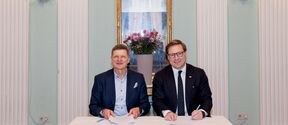This enhanced decomposition method was compared with previous methods in a listening test. Eleven experienced listeners were individually asked to audit several short music excepts and the components extracted from them using different methods.
The new method emerged as the winning way to decompose most sounds, based on the listeners’ ratings. Only when there is a strong vibrato in a musical sound, such as in a singing voice or the violin, all decomposition methods struggle, and in these cases some previous methods are superior.
A test use case for the new decomposition method is the time-scale modification of sound, especially slowing down of music. This was tested in a preference listening test against the lab’s own previous method, which was selected as the best academic technique in a comparative study a few years ago. Again, Fierro’s new method was a clear winner.
‘The new sound decomposition method opens many exciting possibilities in sound processing,’ says professor Välimäki. ‘The slowing down of sound is currently our main interest. It is striking that for example in sports news, the slow-motion videos are always silent. The reason is probably that the sound quality in current slow-down audio tools is not good enough. We have already started developing better time-scale modification methods, which use a deep neural network to help stretch some components.’
The high-quality sound decomposition also enables novel types of music remixing techniques. One of them leads to distortion-free dynamic range compression. Namely, the transient component often contains the loudest peaks in the sound waveform, so simply reducing the level of the transient component and mixing it back with the others can limit the peak-to-peak value of audio.
Reference:
Fierro, L. & Välimäki, V. (2023). Enhanced Fuzzy Decomposition of Sound Into Sines, Transients, and Noise. Journal of the Audio Engineering Society. doi: 10.17743/jaes.2022.0077
Contact:
Leonardo Fierro
Doctoral Researcher, Aalto University, Department of Information and Communications Engineering, Acoustics Lab
leonardo.fierro@aalto.fi
Vesa Välimäki
Professor, Aalto University, Department of Information and Communications Engineering, Acoustics Lab
vesa.valimaki@aalto.fi
phone + 358 50 569 1176












